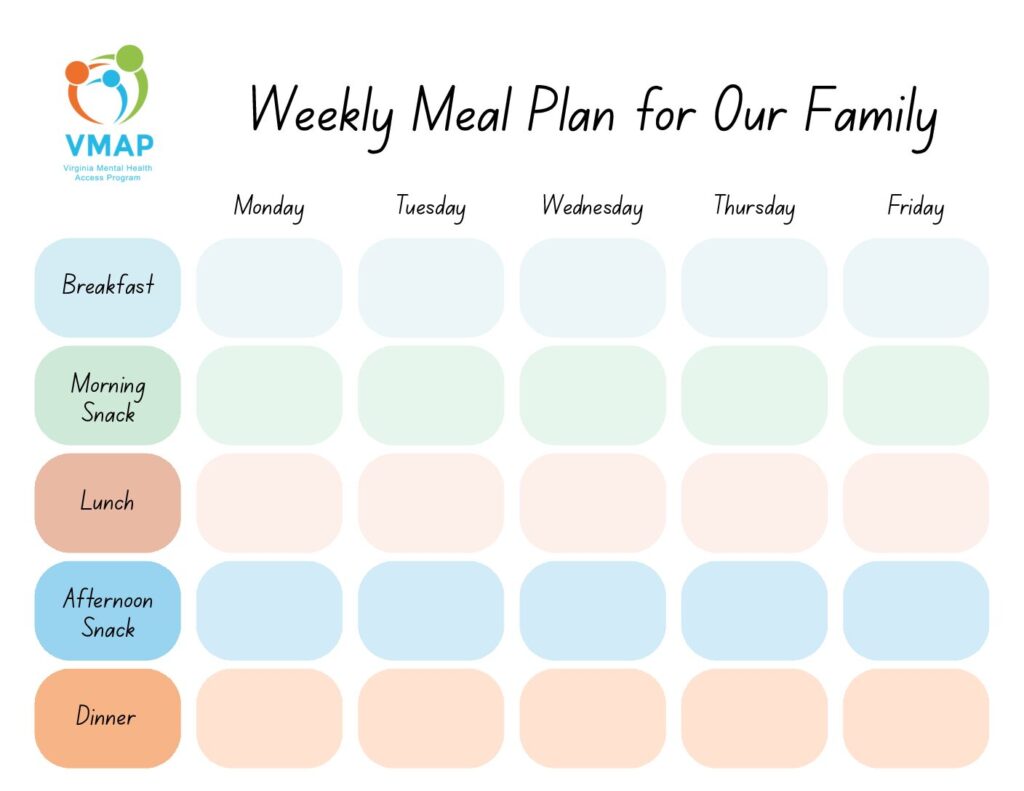Routines for Kids: Create Habits that Work for Your Children
The Many Benefits of Routines for Kids
Routines are known to have a wide range of positive impacts on your child’s physical, mental, and emotional health. Here are just a few, from a review of 170 studies!
- Better cognitive functioning in infants1 and preschoolers2
- Better emotional and behavioral regulation3,4
- Better emotional understanding, empathy, and more enriched relationships5
- Better academic outcomes6,7,8
- Better mental health outcomes9,10,11
- Lower BMI and less obesity risk12,13
Implementing routines can also support children experiencing challenges such as financial instability, parental mental health struggles, or family transitions like divorce. Regardless of your family’s situation, routines are a great way to maintain order and peace in your home. Whether your children have never had a routine or you want to improve their current one, we hope this article can help!
How to Build a Routine for Your Children
Start by thinking about the steps that you and your children follow (or wish you did!) for certain activities or times of the day. We like to break up routines into the following categories and build them out from there. We’ve made two handouts that you can download and print for your home!
- Mornings: These can be especially chaotic on school days! They’re often the most detailed routines as well, as there are many important things that need to be remembered in the morning. Think about what it takes to get your child out of bed and out the door, and then design a routine where one action flows into the next. Here’s a stress-free school morning checklist that might give you some ideas!
- Mealtimes: Meal planning and meal prepping are great ways to reduce the stress of figuring out what everyone is going to eat. Contrary to popular belief, not every day needs to be completely different and unique. This is especially true with children, who often have a specific selection of snacks and meals that they really enjoy. Use our downloadable weekday meal planner to plan out what food your child can have at each part of the day. To make mornings easier, you can prepare breakfasts and lunches the night before and make dinners that leave you leftovers. We’ve linked some resources below to websites that share sample kid-friendly meal plans.
- After School: When your child gets done with a long day at school, a routine can help ease their transition from tired and overwhelmed to cool and calm. Here are some great ideas for what to include in an after-school routine! Some days of the week may look different if your child has afternoon activities, but you can build your routine to work for those days, too!
- Homework: The last thing any kid wants after a long day at school is to do their homework, but it has to be done! This article from Child Mind Institute has some great tips for parents on how to create a homework routine that motivates your child.
- Evenings: Just like afternoons, evening routines can look different depending on what you have planned. When there will be ample downtime, it’s good to plan for how much TV and media time you want your children to have. Here’s a guide from the American Academy of Pediatrics that talks about how much screen time your child should be having.
- Bedtime: The routine leading up to bedtime should help your child get physically and mentally ready to fall asleep. Whether it’s taking a bath, brushing their teeth, or reading a book with you, having a reliable rhythm to bedtime can improve your child’s ability to fall and stay asleep.
Tips to Make Routines Work for Your Family
- Keep routines where everyone can see. The fridge or your child’s bedroom door are two great places to stick routine checklists. You can print off a new sheet every week for your child to check off each day, or you can laminate the printout so you can erase it.
- Focus on making routines for the busy times, not for down time. Creating a flow for getting ready for school or bed is great, but it’s important to let your children have an unstructured space to decompress when there’s time to spare.
- Build family traditions and rituals. These are another kind of routine that can help children make sense of holidays, birthdays, and other events. Some ideas include family movie night, making holiday cookies, or always going out for dinner when it’s someone’s birthday. Little things like this are great ways to build connection consistency for your child.
- Stick to routines as much as possible, but stay flexible! Instead of worrying about the exact time or sequence that your routine happens in, focus on keeping the rhythm of things similar. For example, if you get home late from an activity, still read with your child as planned – but maybe one book or chapter less than usual.
We hope this has given you some ideas for your family! If you’re struggling to implement routines, your child’s pediatrician can be a great resource for advice on how to navigate the specific challenges you’re facing.






